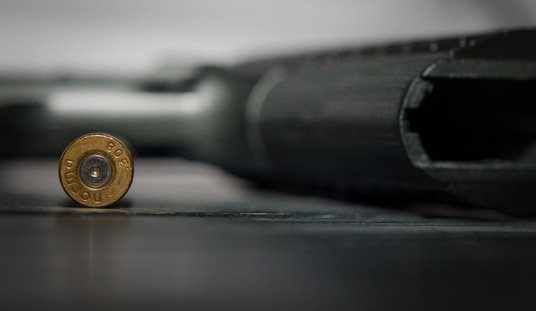Last month, U.S. District Judge Janet Bond Arterton tossed out a lawsuit challenging Connecticut’s ban on concealed carry in state parks, ruling that the plaintiff in the litigation didn’t have standing to sue because there was no credible threat of him being arrested or prosecuted for violating the ban. That was an exceedingly odd decision, but it kept the ban in place (at least for now), which counts as a win as far as anti-gunners are concerned.
Now Arterton has followed up with another legal doozy, rejecting a preliminary injunction against the state’s newly-expanded ban on so-called assault weapons and large capacity magazines by declaring that the Supreme Court’s Second Amendment jurisprudence allows for bans on commonly-owned weapons, and that “only a ban on firearms that are so pervasively used for self-defense that to ban them would ‘infringe,’ or destroy, the right to self-defense” would violate our right to keep and bear arms.
Under Arterton’s interpretation of Heller, McDonald, Caetano, and Bruen everything from bolt-action hunting rifles to single-barreled shotguns could be banned without calling into question the right to keep and bear arms; presumably leaving only some (but likely not all) handguns protected by the Second Amendment’s language.
Unlike the broader category of handguns at issue in Heller and Bruen, the record developed here demonstrates that assault weapons and LCMs are suboptimal for self-defense. A set of statutes that bans only a subset of each category of firearms that possess new and dangerous characteristics that make them susceptible to abuse by nonlaw abiding citizens wielding them for unlawful purposes imposes a comparable burden to the regulations on Bowie knives, percussion cap pistols, and other dangerous or concealed weapons, particularly when “there remain more than one thousand firearms that Connecticut residents can purchase for responsible and lawful uses like self-defense, home defense, and other lawful purposes such as hunting and sport shooting.”
Well hang on there. If, according to Arterton, only those arms that are “pervasively” used in self-defense cannot be banned, then firearms most commonly used for lawful purposes such as hunting and sport shooting have no protection whatsoever under the Second Amendment, regardless of whether or not the state of Connecticut still allows them to be sold.
You can read Arterton’s lengthy dissertation for yourself here, but I’ll caution you before you start that her opinion reminds me of the apocryphal quote attributed to W.C. Fields; if you can’t dazzle them with brilliance baffle them with bullsh**. Arterton definitely left me scratching my head on multiple occasions, such as her rejection of the use of FBI crime statistics that point to rifles of any kind being rarely used in homicide because the data supposedly “provides limited relevant insight” since they “these statistics do not track what types of firearms are used with enough precision to determine whether they are assault weapons.” Arterton, meanwhile, blithely took the state’s “expert” John Donohue of Stanford University at face value, though Donohue has maintained that the individual right to keep and bear arms was created by the Supreme Court in Heller and was not a pre-existing right protected by the Second Amendment in 1791.
There was another head-scratching moment of sloppiness or disregard for the facts when Arterton cited a 1994 case known as Staples v. United States. Plaintiffs contended that the case showed a distinction between military-grade M16s and semi-automatic AR-15s, but Arterton bizarrely claimed that Staples “does not mention AR-15s”; a point easily disputed by the Firearms Policy Coalition (see second tweet below).
??? pic.twitter.com/wCa5lidxJ5
— Firearms Policy Coalition (@gunpolicy) August 3, 2023
By my count that’s eight specific references to AR-15s in the single page of the Staples opinion shared by FPC, when Arteron claims the rifle goes unmentioned in the opinion. That’s a significant error on Arterton’s part, but it’s also an example of just how sloppy and outcome-driven her ruling is overall. “Large capacity” magazines are arms, according to Arterton, as are AR-15s and other firearms banned by Connecticut’s prohibition on “assault weapons”, but that doesn’t mean they’re protected by the Second Amendment. According to her, only if LCMs and those prohibited firearms can be shown to be “pervasively used for self-defense” are they afforded protection; a position that calls into question the lawfulness of almost every firearm except handguns. That flies in the face of the text, history, and tradition of our right to keep and bear arms, and it would be downright laughable were it not for the effect that Arterton’s decision could have on gun owners in the state.
The good news is that the judge has given the plaintiffs plenty to work with on appeal, and Arterton’s opinion won’t be the last word on Connecticut’s ban. Until the Supreme Court steps in and sets things right, however, we’re unfortunately going to see more activist judges and their unfounded opinions allow for abuses and infringements of our right to keep and bear arms, and relief can’t come soon enough for gun owners in blue states intent on eradicating the substance of the Second Amendment’s protections.









Join the conversation as a VIP Member